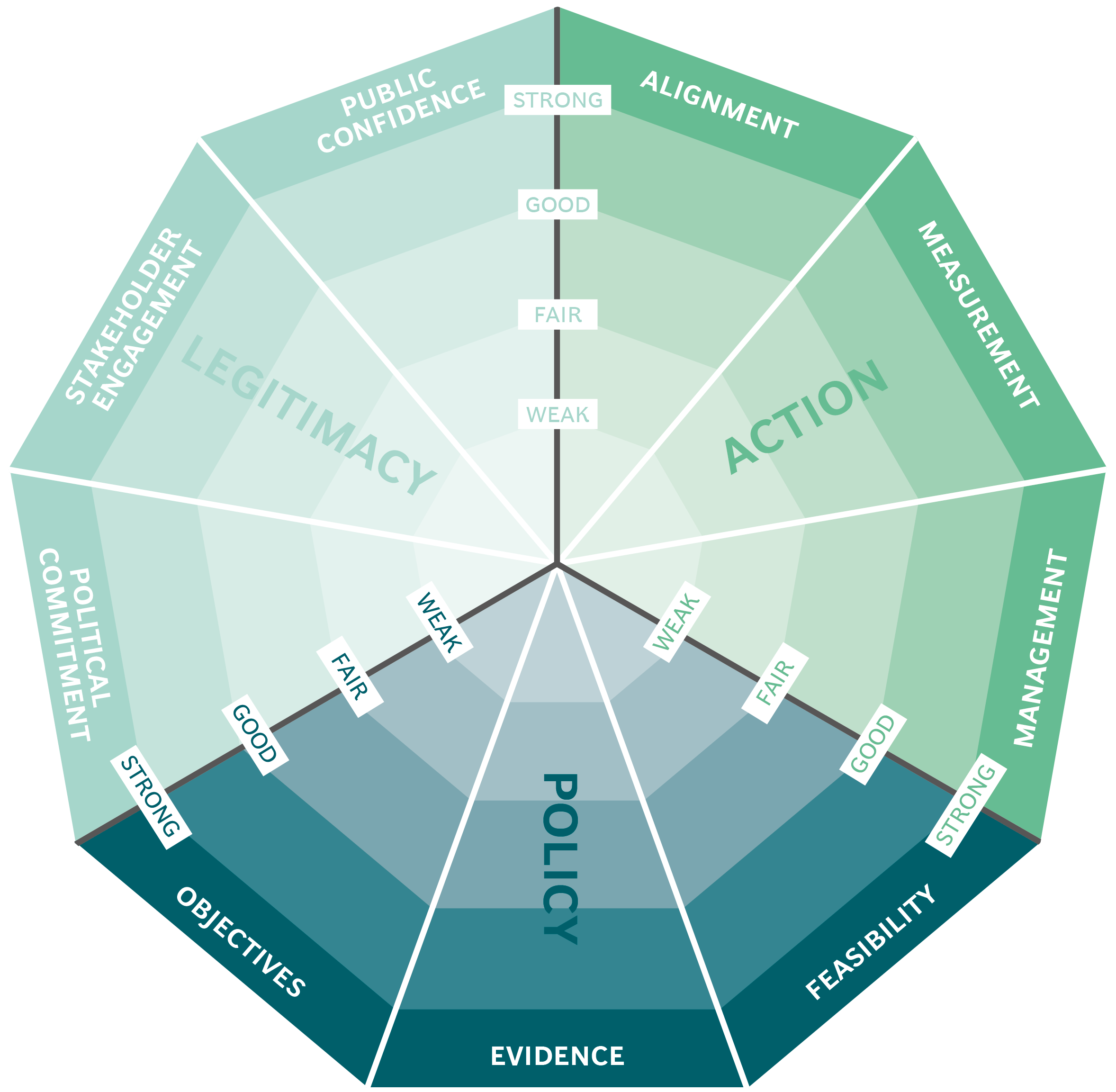
Skills-based vocational training programme
The initiative
Dual vocational training in Mexico began in 1993 with the cooperation between Mexico's College of Professional Technical Education (CONALEP) and Mercedes-Benz. In 1994 work began on a new approach to qualifications which aimed to meet the needs of Mexico's productive sectors through the creation of a transparent set of labour competence standards based on work performance.
The Mexican government negotiated a loan from the World Bank to develop and implement its Technical Education and Training Modernisation Project. However, economic circumstances led to a gradual phasing out of the system until 2008, when it was reintroduced by CONALEP after observing the overwhelming success of early programmes which used dual vocational training in Mexico to prepare professionals for success.
Since December 2010, compulsory schooling has also been extended to cover the upper secondary level. This can be completed either by qualifying as a professional technician at a vocational school or by studying for the general upper secondary school leaving certificate.
The Mexican government has the following objectives for its VET initiative:
- Improve the quality and relevance of higher secondary education and training for the world of work.
- Encourage science and technology education, as it is essential to support Mexico's transition to a knowledge-based economy.
- Enable students to attend upper secondary education to gain the skills necessary so as to make contributions to the social and economic advancement of Mexico.
- Introduce a qualifications framework which will readdress the mismatch between the skills and competencies taught in secondary education and labour market requirements.
- To foster the development of qualifications based on labour competence technical standards, by means of organising and supporting lead bodies.
The challenge
During the last decade, the Mexican economy has fallen to fifteenth position in the World Economic Forum's (WEF's) global ranking of nations' GDP. [1] National education and training systems have been identified as one of the main weaknesses in the economy, and this drop in the WEF rankings has raised awareness among Mexican stakeholders of the need to introduce changes to education, and to Vocational and Technical Education (VET) in particular.
Latin American countries have made several efforts to strengthen and modernise VET and Mexico is no exception. It focused initially on the German method of dual vocational training, which can be defined as attending classes at a vocational school while receiving on-the-job training at a company. [2]
The public impact
The VET initiative in Mexico has had a clear effect:
- The Occupational Competency Standardisation and Certification Council (CONOCER) has granted 52 institutions - mainly national sector chambers - the authority to evaluate and certify competencies in Mexico.
- From CONOCER's relaunch in 2008 to June 2013, it issued 300,000 certifications—twice the total for 1994-2006, averaging 60,000 per year.
- In June 2013 there were 134 competency management committees across a range of sectors including construction, mortgage lending, automotive, tourism, rural sectors, and renewable energy.
- Over 1,000 students are now being educated in this company-based training system currently provided by approximately 150 companies.
Stakeholder engagement
The relationship between stakeholders have evolved over the years and there are now many ministries funding the VET programme. At present, CONOCER's main funding institutions are the Ministries of Education Labour and the Economy. It has been impaired, though, by the limited involvement of trade unions and education and training institutions.
Initial stakeholders included a number of partnerships with German stakeholders:
- CONALEP commissioned the company German-Mexican Alliance for Technology Transfer (ALTRATEC) to provide specialist local advice and to promote the expansion of the training offers.
- CONALEP “developed a form of training based on the German dual model which it has then adapted” in order to meet the different conditions of Mexican industry. [3]
- Along with a number of small and medium-sized companies in Estado de México, both Siemens in Guadalajara and Volkswagen in Puebla have provided training since the 1970s, although Mercedes-Benz has since reduced its involvement in the scheme.
Political commitment
Even though there has been support from federal government in the implementation and development of the dual model VET project, there are still issues in its funding and some common principles need to be established for its effective functioning:
- Since the project's inception, in 1993, it has been governed by the federal government.
- In 2008, economic circumstances led to the programme being phased out. When it was reintroduced, roles were decentralised so that it became the joint responsibility of the federal and state governments.
- The current federal government has been actively involved in liaising with the secretaries of education in the Mexican states through the National Council of Education Authorities (CONAEDU).
- The Education and Labour Ministries offer technical education and training from higher secondary school to graduate levels.
Public confidence
In 2012, CONOCER conducted an independent survey of more than 1,000 business, labour, educational, social sector and government representatives who had liaised with CONOCER's competence management committees. [4] [5]
It was found that:
- A large majority of respondents (89%) said that their experience of CONOCER was positive.
- A similarly large majority (86%) said that CONOCER provided good support for committees and the development of skill standards.
Clarity of objectives
The UNESCO analysis of the VET programme selects three of its six main objectives as the most important:
- Improving the quality and relevance of higher secondary education and training for the world of work.
- Ensuring that education and training is inclusive
- Encouraging science and technology education, as it is essential to support Mexico's transition to a knowledge-based economy. [6]
However, there are no set measurement criteria in place to test the impact of the project.
Strength of evidence
Many pilot projects have been undertaken by the governing bodies to test the strength and weaknesses of the project. However, there is some weakness in making the best use of other stakeholders' involvement and in the use of data for policymaking, and the influential teachers' union had little input.
Before the project began, CONOCER studied some existing international models: principally the German model, but also those of New Zealand and Spain among others. It negotiated funding for pilot projects in industries such as transport, retail and construction with the Inter-American Development Bank (IDB). At the same time, the International Labour Organization (ILO) was undertaking pilots in Mexico as well as other Latin American countries. [7]
The qualification model was based on the UK's National Vocational Qualifications (NVQ) model.
Feasibility
There has been many implementation problems during the design of the project. There have also been doubts about the strategies which were in place, and the qualifications that CONOCER established:
- CONOCER did not match the VET curricula sufficiently well to the needs of the Mexican economy,
- There was no clear strategy for matching technological education in relation to the qualifications framework.
- The education institutions produced their own standards, rather than follow a national standard.
- The costs of assessment for the qualification was high.
Targets were too ambitious in terms of time available, and the rules were over-complicated.
Management
The governance structure has become more complex and there is confusion about the relative responsibilities of the federal and state governments:
- The governance of the VET system was initially the responsibility of the federal government.
- During process of decentralisation, the individual states began to play a more active role. Many new VET centres were created under the control of the secretaries of education of the states.
This has resulted in a complex governance structure where both the Federal and the States governments are responsible for VET.
Measurement
Measurement and evaluation activities are inconsistent, even though measures were taken to collect data based on appropriate indicators and there was exploratory interim evaluation of the reform, based on teacher surveys, in 2005. However, limited formal monitoring and evaluation structures are in place.Alignment
There are problems in coordination between the VET system and stakeholders, which has hindered effective policy development:
- The Ministry of Education created a framework of national qualifications and levels, while CONOCER have sector-specific competency committees to define occupational standards.
- CONOCER does not align well with ALTRATEC, a specialist organization that focuses on dual vocational training in Mexico.
- INIFE (Institute Nacional de Infraestructura y Equipamiento) consulted with experts (including teachers, industry professionals and professional organisations) to prepare national guidelines for teaching the BTe, the Mexican Technical Baccalaureate, a parallel qualification to those of the VET system.
- The existing set of VET qualifications is not regularly updated and has limited recognition in the labour market.
- Linkages between the VET system and the participating employers are still relatively weak.
The preparation of some VET teachers and trainers is inadequate. As a consequence, there is wide degree of variation both in the quantity and quality of workplace training for VET students.

The Public Impact Fundamentals - A framework for successful policy
This case study has been assessed using the Public Impact Fundamentals, a simple framework and practical tool to help you assess your public policies and ensure the three fundamentals - Legitimacy, Policy and Action are embedded in them.
Learn more about the Fundamentals and how you can use them to access your own policies and initiatives.
You may also be interested in...


BANSEFI: promoting financial inclusion throughout Mexico

The Australian Centre for Social Innovation: the Family by Family (FbF) project

Formalising the appointment and compensation of Chile’s senior civil servants

Rainfall insurance in India
